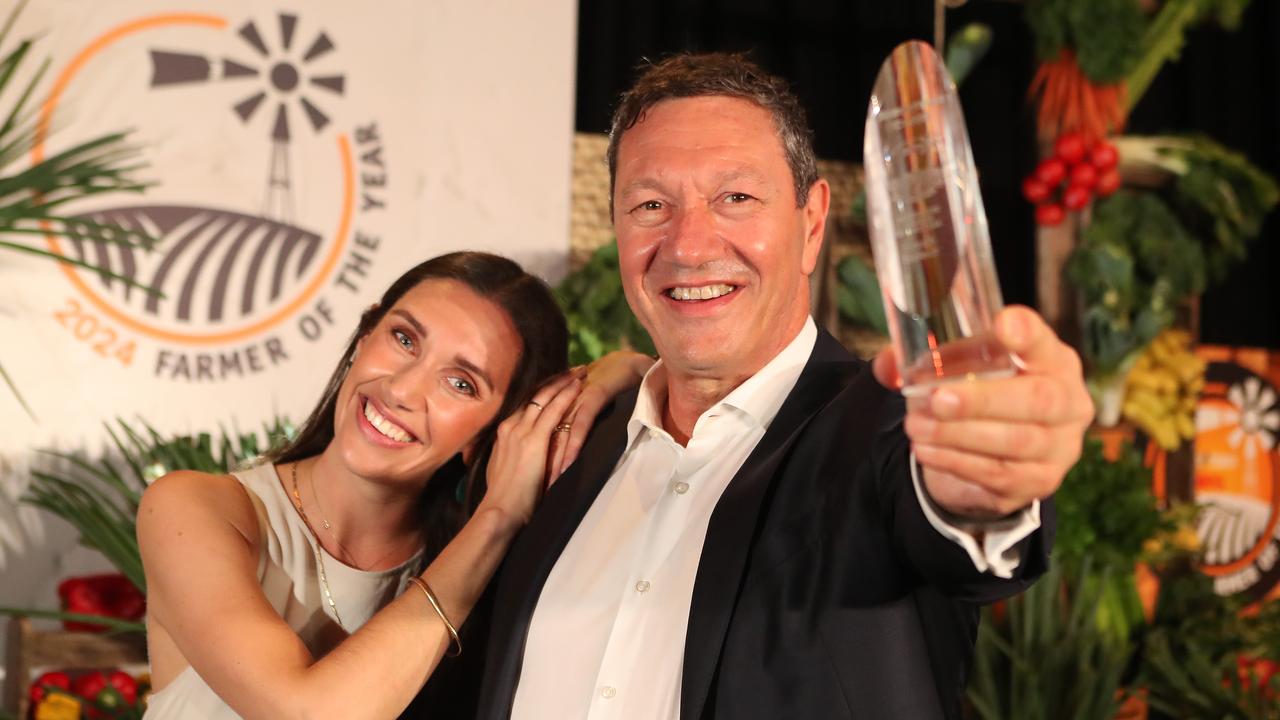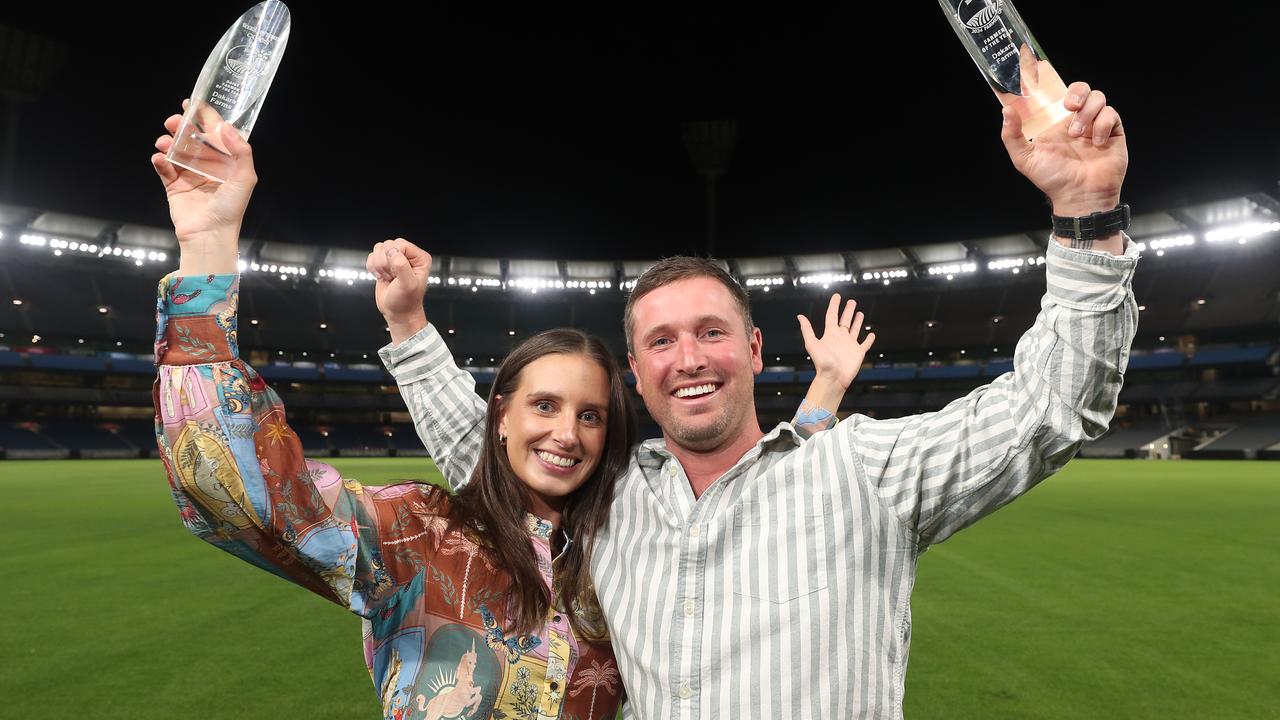David and Prue Bondfield of Palgrove Charolais stud at Dalveen in Queensland lead the bull charge
FIVE properties and four districts in two states is proof of Palgrove Charolais stud’s success, writes JAMES WAGSTAFF

SELLING 1000 bulls a year is one thing, juggling the demands of a multifaceted beef farming operation that stretches 1300km from south to north is something else entirely.
Welcome to the dynamic world of David and Prue Bondfield who, from their base in southern Queensland, run one of Australia’s leading stud beef operations spread across more than 10,500ha of land, five properties, in four districts and two states.
Operating on the notion that “information is the most powerful tool”, David and Prue’s Palgrove Charolais, Charbray and Ultrablack studs have attracted a loyal following from beef producers across the nation seeking structurally sound cattle backed by impressive performance figures.
And their success speaks for itself: the Bondfields have gone from running 50 stud cows 25 years ago to 2300 today, and from selling 23 bulls at auction for an average of $1380 to this year clearing 168 for an average of $11,000.
The Bondfields have collected major interbreed titles at shows across Australia and, while they have moved away from the show ring in recent years, they have new-found success in leading steer and carcass competitions.
GROWTH CURVE
THE Palgrove success story dates back to 1969 when David’s parents, Peter and Valerie, introduced Charolais to their existing Shorthorn and Brahman herds in an effort to lift weights and yields.
They were part of the first importation of Charolais semen from the UK, carried out through a ballot system.
David and Prue took over the reins in 1990. “We leased country, we agisted country, we built our numbers up, we went through that period of really extreme interest rates — which was a huge challenge, managing debt and still trying grow,” he said.
“But as that dropped we were able to get a variety of lease options and buy land and develop land, and build our cattle numbers up.”
Palgrove is now the largest registered Charolais herd in Australia. In 2009, the Bondfields introduced Ultrablacks, a Brangus-Angus composite “that you can take a little further into the tick (zone in northern Australia) and further into the heat”.
Of the 900-1000 bulls they now sell a year, 600 are Charolais and 250-300 Ultrablack. They also sell Charbray and Charolais-Angus bulls.
RANGE ROVER
THE Palgrove business is headquartered on 4050ha across two properties at Dalveen, south of Warwick, in Queensland, which is home to the stud’s sale complex and artificial insemination and embryo transfer facilities.
Situated in 650mm rainfall country, the properties comprise lighter granite country.
David said the stud’s “flagship” property was now 2225ha at Ben Lomond in the NSW New England region which boasts an annual rainfall of more than 1075mm or 43 inches.
“We’ve ticked over 50 inches (1250mm) already for the year,” David said.
The property comprises “the best of the New England” with red basalt soils and highly productive fescue, rye-grass and white clover pastures.
Ben Lomond is used for breeding and young cattle development, with stock run in big mobs and moved around a rotational grazing program.
There’s also two 2025ha bull depots: one at Drillham, east of Roma, which comprises brigalow country, runs 500-700 bulls and “a couple of hundred breeding cows if we need to”; and north at Emerald, which is home to about 300-400 bulls and 200 breeders.
“North to south between the properties is about 1300km but we pick up different markets and certainly different weather patterns, and it’s a bit of a droughtproofing deal as well,” David said.
“It’s pretty strategic where we go.”
The Bondfields have put most of the parcels of land together in the past eight years.
STAFF SERGEANT
PALGROVE operates with a permanent staff number of about eight as well as some casual workers, which are moved around the properties “to do the job” as required.
About 80 per cent of cows calve in the spring and 20 per cent in the autumn, which David said suited their production system well. Most of the 5500-head herd is registered but the Bondfields plan to increase the commercial arm of the operation.
Artificial insemination is used extensively and embryo-transfer allows them to replicate their top-end genetics.
Performance recording starts at birth, when the calves are weighed and receive a “subtag” while the cows get an udder score.
David said calving data was uploaded to a centralised system then animals were given a permanent tag and a National Livestock Identification System tag. This allows details to be shared with all property managers.
Palgrove is a founding member of Breedplan and before its establishment worked with the University of New England at Armidale to turn original raw data into management groups-type performance.
“We are trying to enhance our recording system with just-in-time information being available at all property locations,” David said. “And as our numbers grow bigger our reliance on a cloud-based transparent system is really important.”
The calves are yard weaned “rigidly” at seven months, “sometimes earlier if it’s a drought”.
CONSTITUTION RIGHTS
WHEN it comes to selection of cattle, David says “constitution, fertility and adaptation are huge, regardless of how impressive their (estimated breeding value) performance is”.
“That’s maturity pattern, that’s natural volume, skin type, soundness — all those things that keep them alive,” he said.
“When that is covered we’re very geared to EBVs and Breedplan.”
Most bulls are sold from yearling age and “we don’t have many left at two years old”. A quarter of the bulls are sold at auction, the remainder privately.
The stud hosts its annual on-property sale at Dalveen in early September, one at Scone, in the NSW Hunter Valley, in June and, season permitting, others at Cloncurry in September and Charters Towers in February. Next year, Palgrove will also host a female sale at Dalveen in March.
David said the stud’s main client base was in northern Queensland — “Charters Towers through to Cloncurry, as well as the Central Highlands of Queensland”.
“We also sell a significant number of bulls and females into NSW and Victoria,” he said.
David said the clients ranged from those selling cattle to the lighter domestic market through to heavy export and live export.
“Our main focus is always our clients and their markets, and there is no compromise on that,” he said.
David said the biggest client this year bought 180 bulls.
With these larger orders, the stud is working with clients to breed for their particular needs.
SHOW STOPPER
AFTER about 40 years, Palgrove ceased showing their cattle about three years ago.
David said while he appreciated the need for showing for promotion, he felt they had moved beyond it.
Since then, they have entered major feedlot and carcass competitions with good success.
At a recent 100-day feedlot trial at Grassdale Feedlot, south of Dalby, teams from Palgrove placed first and third on overall weight gain.
At last year’s Royal Brisbane Show, Palgrove won grand champion trade steers with a pen of Charolais-Angus.
David said the decision to quit showing had also led to efficiencies on farm.
“We now join a lot more yearling bulls that may have been kept aside in another subgroup to be a potential show animal,” David said.
David said the next growth phase of the business would be building “a larger commercial arm ... not only to increase our economies of scale but also to be able to progeny test our own genetics”.
He and Prue, who is the chairwoman of the national beef sustainability framework committee, see a positive future for the industry.
“Domestically, we’ve got the alignment of good seasons all over the eastern seaboard, a shortage of cattle, plenty of markets and herd rebuilding,” David said.
“For the seedstock producer it has been a fantastic year but saying that it will level, we’ve seen where Canada has been where the US is now.
“And if you’re a beef producer and you’re not looking at the global markets, it’s difficult to make plans and respond to market signals.
“Beef producers can’t make correct management decisions unless they are well advised and got that information.”


